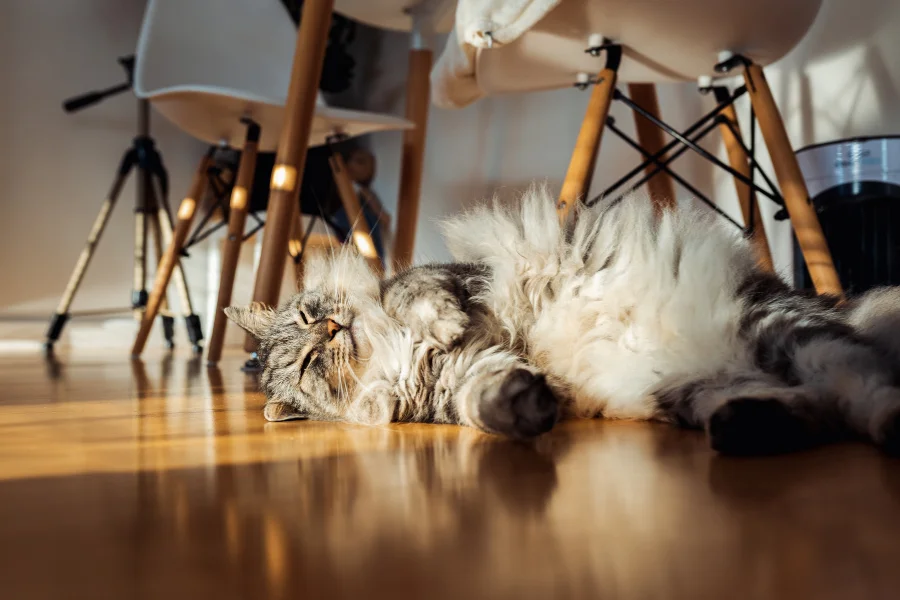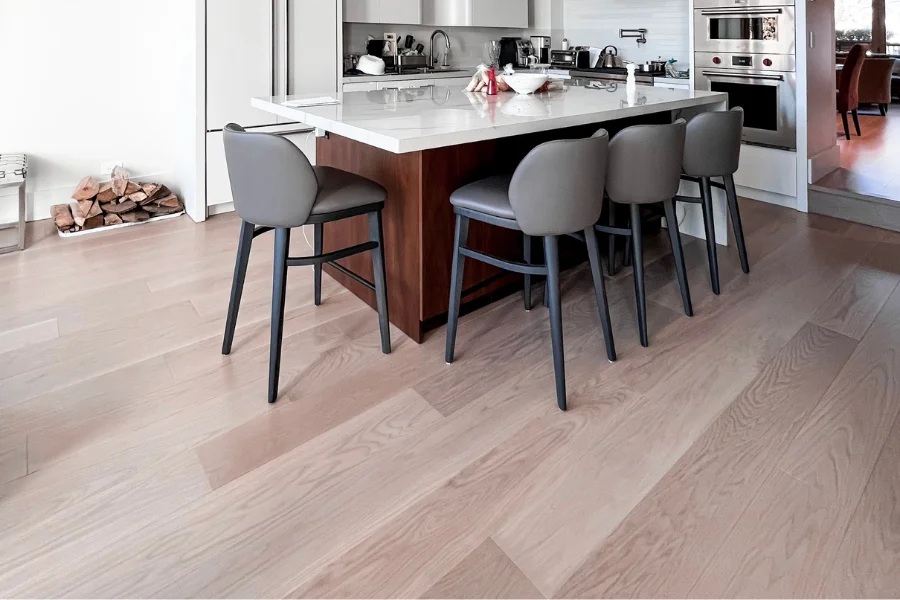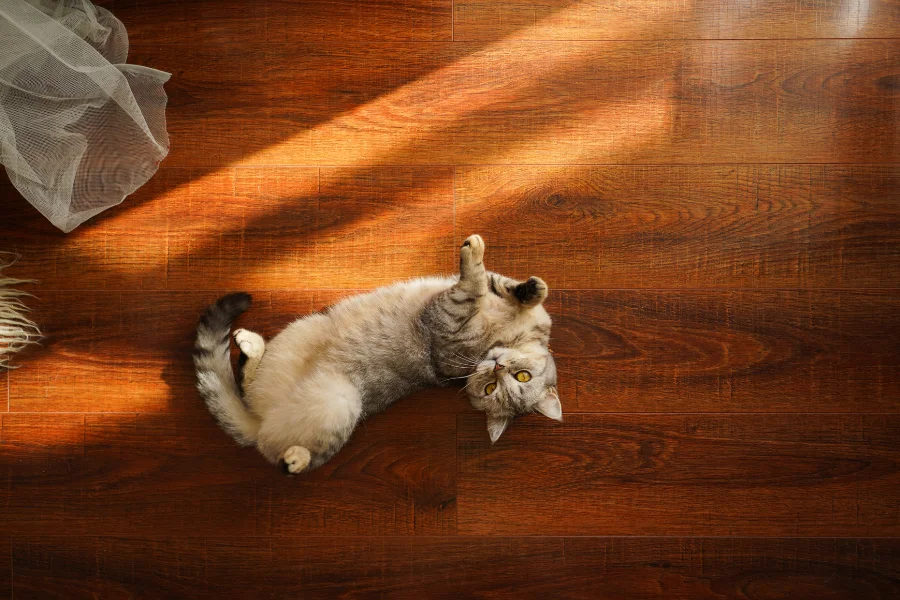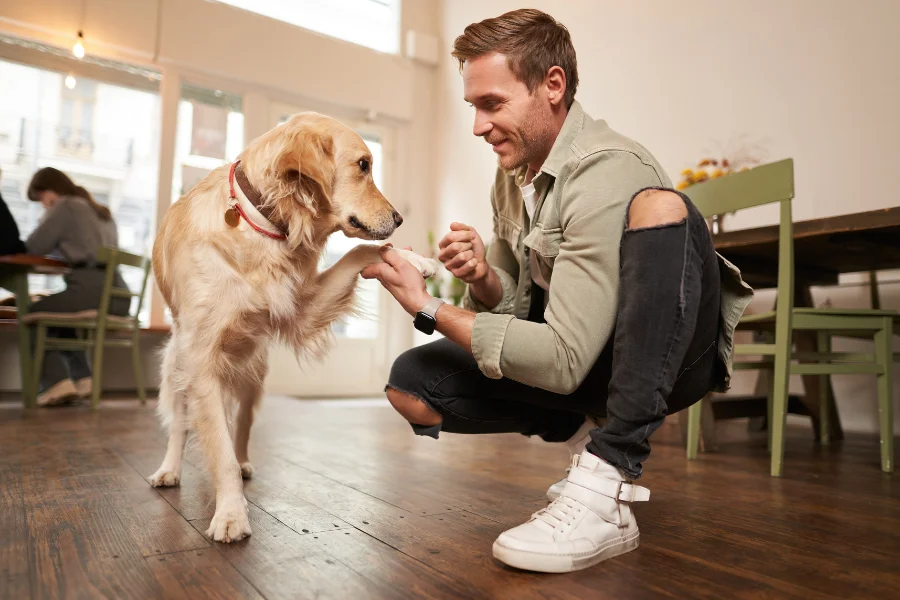Pets are great. Messes, not so much. If you’ve got a dog, cat, or both, you already know your floors go through it – scratches, fur, accidents, the whole deal. So picking the right pet-friendly flooring actually matters. It can save you a ton of cleanup time, and it makes a difference in how long your floors hold up.
At Ez Con, we deal with this every day. A lot of customers come in asking for something “pet-proof.” That doesn’t really exist, but pet-friendly flooring? That’s absolutely a thing. You just need to know what to look for and what to avoid.
Let’s keep it simple and get into what works.
What Makes Pet-Friendly Flooring?
It’s not just about one thing. Good pet-friendly flooring needs to check a few boxes. It has to be tough. It has to be easy to clean. And it shouldn’t get ruined the first time a dog runs in with muddy paws or a cat decides your floor is a scratching post.
Also, traction matters. Dogs slide around on slick floors, which isn’t just funny, it can sometimes hurt their joints over time. Something with a grip helps.
Lastly, comfort. You don’t want your pets laying on hard, cold surfaces all day!
So when we say “pet-friendly,” we’re talking about a floor that can take a hit, clean up fast, and still look decent after a few years of real life.

The Go-To’s for Pet-Friendly Flooring
Vinyl
We’ll start with vinyl. It’s one of the most solid options out there for homes with pets.
Luxury vinyl planks (LVP) are what most people lean toward. They’re built in layers, which gives them durability and some water resistance. Some types are fully waterproof. That’s huge if you’ve got a puppy still in training or a cat that loves to tip over their water bowl.
Vinyl holds up really well against scratches, especially the higher-end stuff. That’s good news for dogs with claws or cats that like to zoom around the house. Plus, it doesn’t take a lot to keep clean. Just sweep or mop as needed – no complicated maintenance schedules.
Another win: it’s not loud. If your dog paces around at night, vinyl doesn’t click and clack the way harder surfaces can.
Style-wise, you’re not sacrificing anything. There are vinyl floors that look like wood, stone, or concrete, whatever vibe your space has, there’s probably a vinyl that fits it. That matters more than people think. A tough floor is great, but you also want it to look good.

Laminate
Laminate is also in the running for best pet-friendly flooring, and it’s come a long way in the last few years.
People used to knock laminate because it wasn’t waterproof laminate flooring. Some types still are not, but our laminate is mostly waterproof. If you’ve got a well-trained pet or you’re quick on cleanup, laminate can work just fine.
It’s also very scratch-resistant, even more so than some vinyl. That top wear layer is tough. If you’ve got a bigger dog, especially one that gets the zoomies, laminate’s durability might actually be your best bet.
Cleaning it is simple. You won’t need fancy tools or products. Most brooms and mops will do the trick. And because it’s hard, it doesn’t trap odors or stains the way carpet does.
Some laminate floors come with texture, which gives better grip. That’s good for pets who like to run around or are getting older and need a little more stability under their paws.
One note: laminate can be louder underfoot. If your dog wears tags or you’ve got more than one pet, you’ll hear them moving around. Area rugs can help just fine with that.
Things to Watch Out For
So we’ve got vinyl and laminate as top picks. Both have pros. But here are a few things you’ll want to pay attention to when picking specific products:
-
Scratch rating – Not all floors are equal. Look at the specs. Some floors are made for high-traffic areas. That’s what you want.
-
Water resistance – Vinyl usually wins here, but some laminate brands have stepped it up. If spills and accidents are part of daily life, lean toward waterproof options.
-
Installation – If you’re doing it yourself, look for click-lock systems. Both vinyl and laminate have these. We can help you pick the right one if you’re not sure.
-
Underlayment – This adds soundproofing and gives a little softness underfoot. Some vinyl and laminate come with it attached. If not, you can add it separately.
-
Gloss level – Super shiny floors show every smudge and scratch. Go for a matte or textured finish. Looks better, wears better.

Why We Don’t Recommend Other Types
You might be wondering, what about tile, carpet, or real hardwood?
Tile is water-resistant for sure. But it’s hard and cold. Not ideal for pets to lay on, and it can be slippery. Also, grout lines are annoying to clean when you’ve got pets dragging in dirt every day.
Carpet traps hair and stains. Even the “pet-friendly” ones wear down fast. Unless you’re replacing carpet in a very low-traffic room, skip it.
Hardwood looks great. We get it. But pets and hardwood don’t mix well over time. Scratches add up. Water damage is real. And refinishing isn’t cheap. If you want the wood look, go vinyl or laminate. They’ve gotten that realistic.
Final Thoughts
You don’t have to settle when it comes to pet-friendly flooring. You just need to focus on what matters—durability, cleanup, and comfort. Vinyl and laminate both hit those marks, and they come in styles that look just as good as anything else.
At Ez Con, we’ve worked with a lot of pet owners, and we know what works in the real world, not just what looks nice on a sample board. If you’ve got questions, or need help picking between a few options, come talk to us. Bring photos. Tell us about your pets. We’ll help you find a floor that makes sense for your space and won’t fall apart after six months.
Good floors make a huge difference for both you and your pets!
